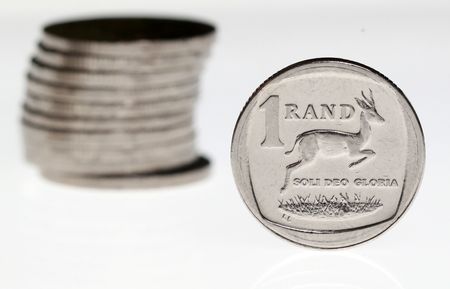By Stephen Culp
NEW YORK (Reuters) – Wall Street stocks veered sharply lower, pulling their European counterparts down too as investor risk appetite waned following a negative U.S. GDP reading, a spate of disappointing economic data and mixed earnings reports.
With no discernible progress in tariff negotiations, U.S. benchmark Treasury yields were headed for their seventh straight session of declines. The dollar strengthened, and crude oil prices headed lower.
All three major U.S. stock indexes were deep in negative territory, with the tech-laden Nasdaq down the most.
On the last day of April, all three U.S. stock indexes were on course for their third straight monthly losses.
Economic data showed U.S. GDP contracted in the first three months of 2025. U.S. President Donald Trump blamed his Democratic predecessor, Joe Biden, and said his tariffs would eventually bring a booming economy.
But Peter Cardillo, Chief Market Economist at Spartan Capital Securities in New York, placed the onus on Trump.
“We got to these numbers because of Trump’s policies,” Cardillo said. “They’ve created uncertainty and when you create uncertainty, nobody’s going to put their foot on the accelerator.
“We’re seeing that as the earnings come out,” Cardillo added. “Guidance has been pulled back.”
Indeed, the ongoing, multi-front trade war continues to cloud U.S. corporate earnings season, with companies increasingly pulling or reducing guidance due to the fog of tariff uncertainties.
Wall Street pared losses after the release of more upbeat economic indicators. Personal Consumption Expenditures (PCE) price index unchanged on a monthly basis and stronger-than-expected consumer spending.
Two high-profile members of the “Magnificent Seven” group of artificial intelligence-related megacap companies, Meta Platforms and Microsoft, are expected to post results after the bell, and upbeat results would likely reverse Wednesday’s selloff.
“We think it’s irrational for people to sell off, particularly tech stocks as hard when we got the real big kahunas reporting,” said Jay Hatfield, portfolio manager at InfraCap in New York. “If we had this call tomorrow, we could be trying to explain why a market’s up 2%.”
The Dow Jones Industrial Average fell 466.73 points, or 1.15%, to 40,061.02, the S&P 500 fell 83.29 points, or 1.50%, to 5,477.54 and the Nasdaq Composite fell 343.74 points, or 1.97%, to 17,117.58.
European stocks erased previous gains following the U.S. GDP data.
MSCI’s gauge of stocks across the globe fell 8.10 points, or 0.97%, to 823.21.
The pan-European STOXX 600 index fell 0.12%, while Europe’s broad FTSEurofirst 300 index fell 3.70 points, or 0.18%.
Emerging market stocks rose 4.65 points, or 0.42%, to 1,110.64. MSCI’s broadest index of Asia-Pacific shares outside Japan closed higher by 0.78%, to 580.07, while Japan’s Nikkei rose 205.39 points, or 0.57%, to 36,045.38.
The dollar held its gains after a swath of mixed U.S. economic data.
The dollar index, which measures the greenback against a basket of currencies including the yen and the euro, rose 0.26% to 99.42, with the euro down 0.19% at $1.1363.
Against the Japanese yen, the dollar strengthened 0.3% to 142.75.
Sterling weakened 0.5% to $1.3339.
The Mexican peso weakened 0.35% versus the dollar at 19.626.
The Canadian dollar strengthened 0.08% versus the greenback to C$1.38 per dollar.
After the weaker-than-expected read on first-quarter economic growth, the yield on benchmark U.S. 10-year notes fell 1 basis point to 4.164%, from 4.174% late on Tuesday.
The 30-year bond yield rose 1.5 basis points to 4.6626% from 4.648% late on Tuesday.
The 2-year note yield, which typically moves in step with interest rate expectations for the Federal Reserve, fell 4.5 basis points to 3.613%, from 3.658% late on Tuesday.
Oil prices slid further, set for their largest drop in nearly 3-1/2 years as Trump’s trade war eroded the demand outlook.
U.S. crude fell 1.89% to $59.30 a barrel and Brent fell to $63.22 per barrel, down 1.6% on the day.
Gold prices dipped in opposition to the dollar.
Spot gold fell 0.39% to $3,302.72 an ounce. U.S. gold futures fell 0.66% to $3,297.00 an ounce.
(Reporting by Stephen Culp; Additional reporting by Alun John; additional reporting by Rae Wee in Singapore; Editing by David Gregorio)










